Blitz Kids (62 page)
Authors: Sean Longden

This book was originally inspired by the tales I heard from my parents and their siblings. Although they were fortunate enough to live in a small town, it was not untouched by war – at first it was filled by evacuees, then later by American servicemen. My mother was fascinated by both groups since my grandmother first took in a Jewish family evacuated from London, then later made space for GIs to be billeted in their home. My father experienced the freedom of growing up in wartime: he left school aged just thirteen to take a well-paid job that had been vacated when the local men had been called up. Whilst researching this book I heard vivid tales that filled in some of the gaps found in stories contained within official reports. Unfortunately I have to offer thanks to my parents posthumously.
A number of veterans whom I had interviewed for previous books helped inspire this story. When I first started thinking about youth in wartime I recalled how John Longfield, whose memories had helped colour both
To the Victor the Spoils
and
T-Force,
had volunteered for the Army after a row with his headmaster. The idea of boys leaving school to join the Army soon became firmly fixed in my mind. I also recalled the stories of Ted Roberts, whom I first met whilst he was selling poppies in a Croydon shopping centre, and who had told me tales of being thrown out of the Army aged just fourteen. I revisited Ted to hear more of his remarkable story. Thanks must also go to Marion Davies, who shared the notes made by her late husband Eric, who had earlier assisted me when I was researching
To the Victor the Spoils
. From Canada, Sylvia Norman (née Bowman) shared stories both of her
wartime experiences and those of her late husband, John, whose story I had earlier told in my books on prisoners of war.
A few years ago I attended a reunion of prisoners of war whose experiences I had related in my books
Hitler’s British Slaves
and
Dunkirk: The Men They Left Behind
. Also at the event was the Evacuees Association. Among its members I met Reg Baker who shared tales of his wartime experiences in Bethnal Green. We later met up so he could expand on his memories. Reg then kindly introduced me to Alf Morris who continues to work hard to raise funds for a memorial to the dead of the Bethnal Green tube disaster. From Reg and Alf I was able to get a vivid image of life in the bombed streets of east London.
Once again,
Wartime News
and its editor Marilyn Ward was a great source of information and interviewees. Through Marilyn’s help I was able to locate Colin Ryder Richardson, Roy Finch, Roy Bartlett, Terry Charles, Ken Durston, Dennis Hobbs, Geoff Pulzer and his wife Julienne, as well as her sister Yvonne Stanford (née Vanhandenhoeve). I must thank them all for responding to my appeal.
I must offer sincere thanks to Tim Brant and John Rix of the Merchant Navy Association who kindly published an appeal for me. This generated a tremendous response and put me in contact with: Bernard Ashton, Robert Ball, Ron Bosworth, Bill Ellis, Stuart Henderson, Raymond Hopkins, Christian Immelman, Arthur Leonard, Anthony Longden, Douglas Morse, Albert Mulholland, Alan Shard, Alan Simms, Ron Singleton, Herbert Taylor, Jim Thomas, Derek Tolfree and Norval Young. Following this appeal Daphne Chinnery contacted me to share tales of her late husband, John. My thanks go to them all. I just hope this book helps further the understanding of the tremendous sacrifice made by the Merchant Navy, whose contribution has been too often ignored.
Tim Essex-Lopresti, Tim Hissey and Robin Woolven at the Civil Defence Association are owed my gratitude for putting me in touch with Sidney Ties.
Thanks to Jason and Helen for putting me in touch with Albert Riddle. My thanks also go to Moyra Alison, Tony Benn, Len Chester, Jean Ceiriog-Jones, Ray and Jean Clarke, John Cotter, Patrick Delaforce, Edward Ford, Reg Fraser, Colin Furk, John Hipkin, Michael Howard, Ron Leagas, Agnes McBarron, Tony Moynihan,
Thomas Nagorski, John Osborne, Dr Brian Phillips, Peter Richards, Peter Rowlands, Dilip Sarkar, Kenneth Toop, Kathleen Walder and Gillian Wheeler. Thanks also to Stan Scott, both for sharing his story of volunteering for the Army aged fourteen and for putting me in touch with Fred Walker. I am also extremely grateful to Will Birch for putting me in touch with Fred Rowe, whose stories injected a genuine sense of the horrors of growing up in wartime London.
As ever, thanks go to my editor Leo Hollis, all at Constable and Robinson, my agent Andrew Lownie and my wife Claire (who has once again endured me disappearing around the country on the quest for the perfect story).
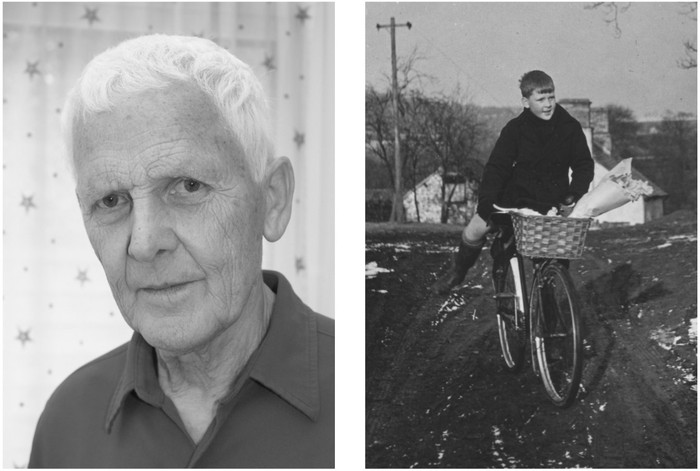
Colin (photographed in 2009) narrowly survived the sinking of SS
City of Benares
whilst being evacuated to the USA aged eleven. He received a commendation for his brave conduct in the Merchant Navy. He later credited his traumatic childhood experiences with giving him the mental strength to successfully battle against cancer.

Former telegram delivery boy Peter (photographed in 2009) with the copy of the
Selected Works
of Karl Marx that he carried inside his tunic whilst serving as an infantryman in Normandy, 1944. The cover still carries the scar where it was hit by shrapnel.
Whilst working as a telegram boy in wartime London, he wore motorcycle gauntlets with the communist slogan ‘Second front, Now’ painted on them. After the war he returned to the Post Office and remained a loyal member of the Communist Party throughout the post-war years, only leaving the party in the 1990s.

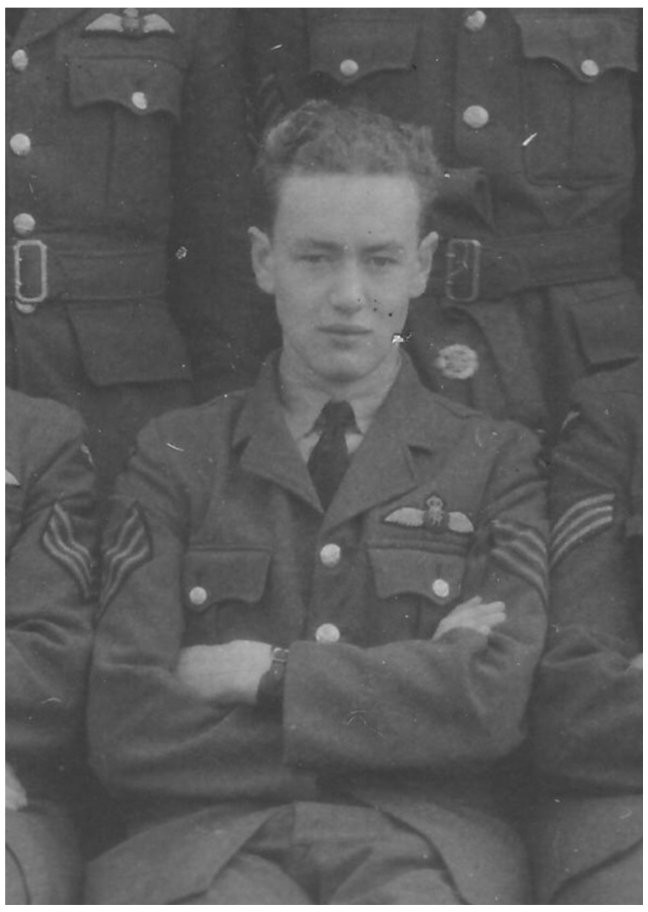
John (photographed in 2009) joined the RAF aged seventeen after a friend told him that he would be able to get sweets and cakes in the NAAFI. He completed a tour of duty piloting Lancaster bombers and was awarded the Distinguished Flying Cross. He then became an instructor. He continued to serve in the RAF, post war, and later worked at the Air Ministry (close to the Foreign Office where he had been an unarmed teenage ‘Home Guard’ during the Blitz).
He later became an airline pilot and travelled the world before retiring to Brighton.
Sadly, his brother who volunteered for the RAF, aged just fifteen, did not survive the war.

Arthur (photographed in 2010) with a model of the ‘Liberty’ ship, the
Sampan
, that he served on during World War Two. He remained in the Merchant Navy and became a Master Mariner. After retiring from the sea, he established a shipping company, leasing containers used to ship goods worldwide.
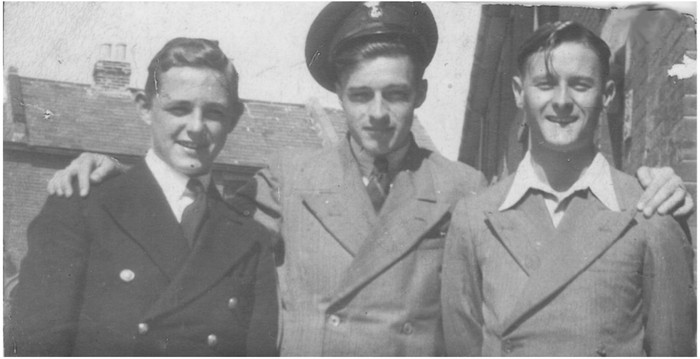
Arthur (left) as a teenager in the wartime Merchant Navy.
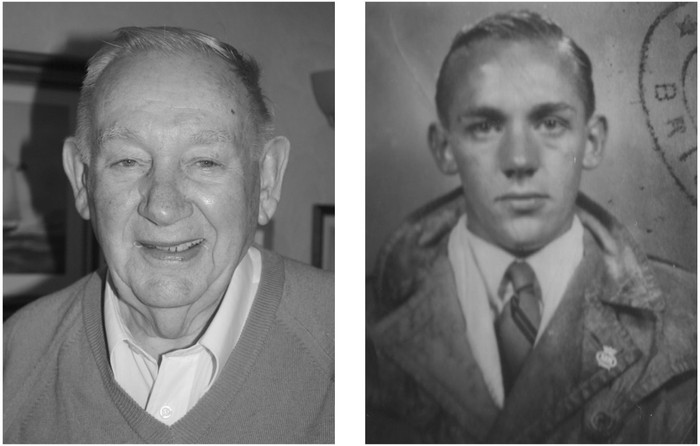
Ron Bosworth (photographed in 2010) joined the Merchant Navy in 1938 aged fifteen. He was at sea when war broke out and was sunk three times before his eighteenth birthday. He remained in the Merchant Navy post war, until retiring from the sea to work in the docks at Avonmouth.
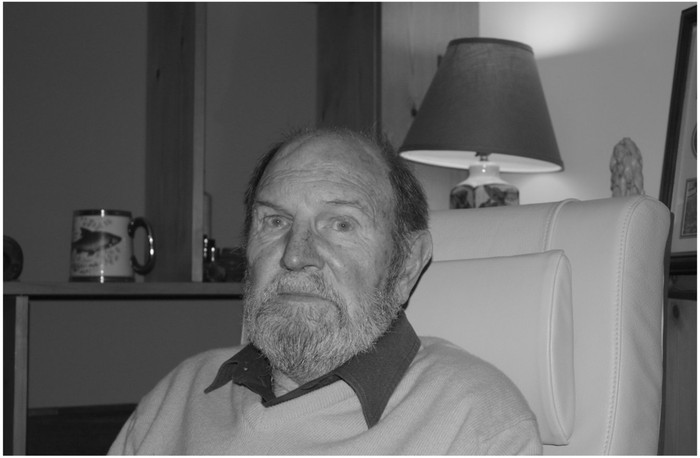
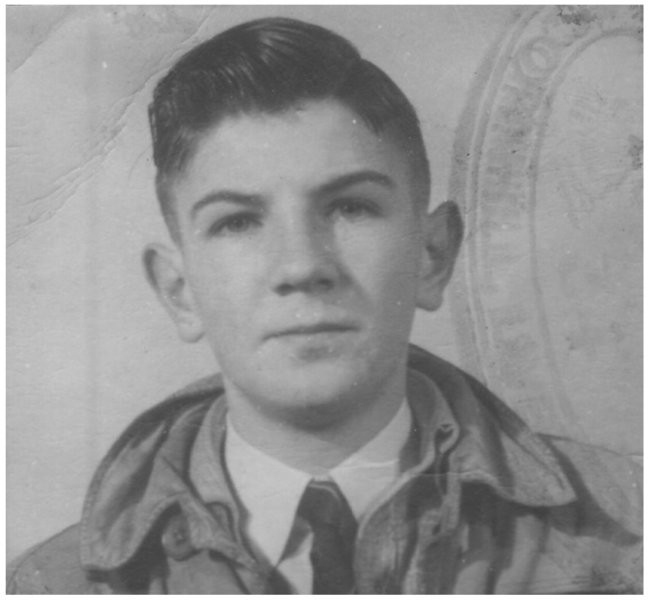
Tony (photographed in 2009) joined the Merchant Navy aged sixteen after his father arranged an apprenticeship for him. He eventually retired as a Master Mariner, having captained ships of all sizes around the world.
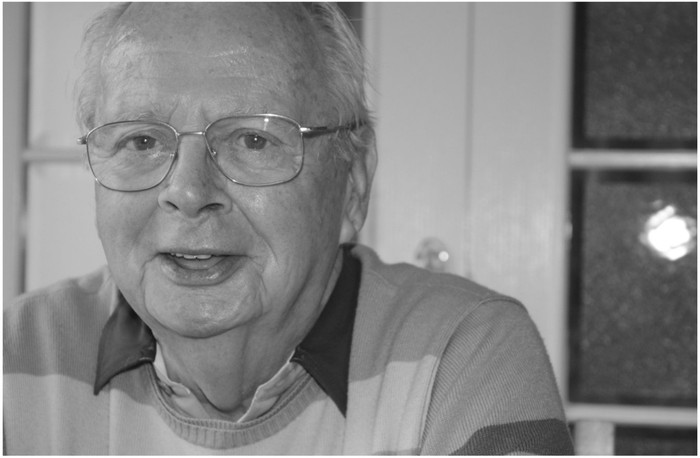
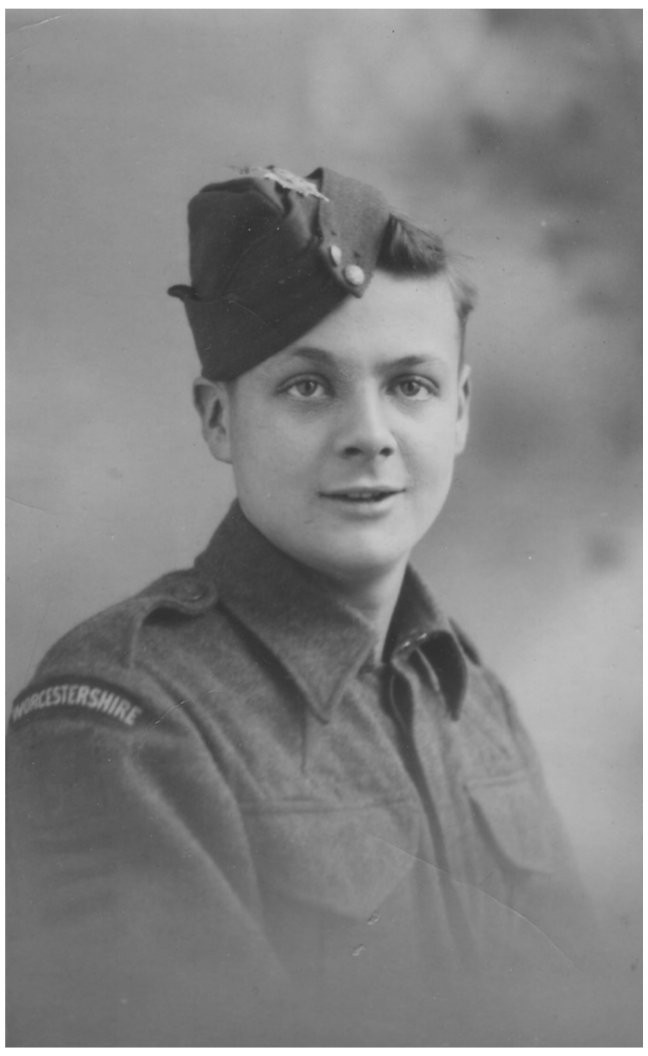
Bill (photographed in 2010) joined the army aged sixteen and served as a stretcher-bearer in Normandy at seventeen. He had managed to convince his mother to let him join whilst ‘underage’ because he feared the war would be over before he had a chance to join in.
During his post-war career in industry, he credited his military service, in particular having to remain calm whilst treating men with serious wounds, with the ability to remain calm and clear-headed, whatever the circumstances.